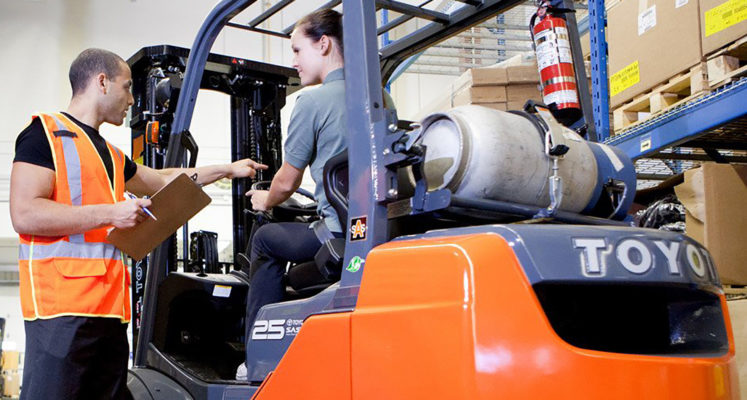Forklifts play a crucial role in material handling within warehouses and industrial settings, but their operation comes with inherent risks. Ensuring the safety of both operators and those working in the vicinity is paramount. In this blog, we’ll delve into three common forklift safety issues that demand attention and proactive measures to create a secure working environment.
1. Inadequate Training and Certification:
One of the primary safety concerns with forklifts is the inadequate training and certification of operators. Operating a forklift requires specialized skills and knowledge about the equipment, load handling, and safety protocols. Insufficient training can lead to accidents, collisions, and unsafe handling practices. Employers must prioritize comprehensive training programs that cover not only the technical aspects of forklift operation but also emphasize safety procedures and hazard awareness. Regular refresher courses should be conducted to ensure that operators remain adept at handling these powerful machines. Here at Southeast we offer forklift safety trainings with expert instructors.
2. Poor Visibility and Blind Spots:
Forklifts often have limited visibility due to their design, with significant blind spots that can result in accidents. Pedestrians and other equipment operators may not be visible to the forklift operator, leading to potential collisions. To address this safety issue, it is crucial to implement additional safety features such as mirrors, cameras, and audible alarms. Clear signage and designated pedestrian pathways can also enhance visibility and minimize the risk of accidents. Regular maintenance of lights and mirrors is essential to ensure optimal visibility during all operational hours. Toyota’s SEnS+ is another way to combat visual impairments within a warehouse. This system uses sensors and cameras to give the operator a complete picture of their surroundings at all times.
3. Overloading and Unstable Loads:
Overloading forklifts or carrying loads in an unstable manner can compromise the stability of the vehicle, increasing the risk of tip-overs and accidents. This safety issue often arises due to a lack of awareness or urgency in meeting deadlines. Employers should emphasize the importance of adhering to load capacity limits and proper load distribution. Additionally, implementing pre-shift checks and routine maintenance protocols can help identify any issues related to the forklift’s stability and load-carrying capacity. Employees should be encouraged to report any concerns promptly to prevent accidents caused by overloaded or unstable loads. Toyota’s System of Active Stability uses sensors to help stabilize the forklift and prevent tipovers.
Forklift safety is a shared responsibility that involves both employers and operators. By addressing common safety issues such as inadequate training, poor visibility, and overloading, businesses can create a safer working environment for everyone involved. Investing in comprehensive training programs, adopting technological solutions for enhanced visibility, and promoting a culture of safety awareness are crucial steps towards minimizing the risks associated with forklift operations. Prioritizing safety not only protects individuals but also contributes to the overall efficiency and success of material handling operations within warehouses and industrial settings.
